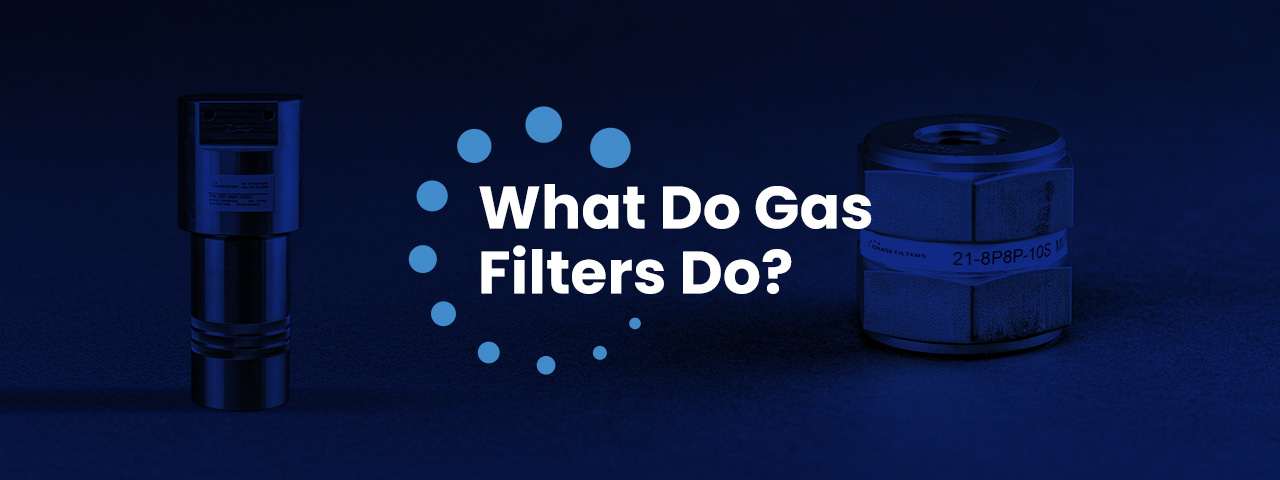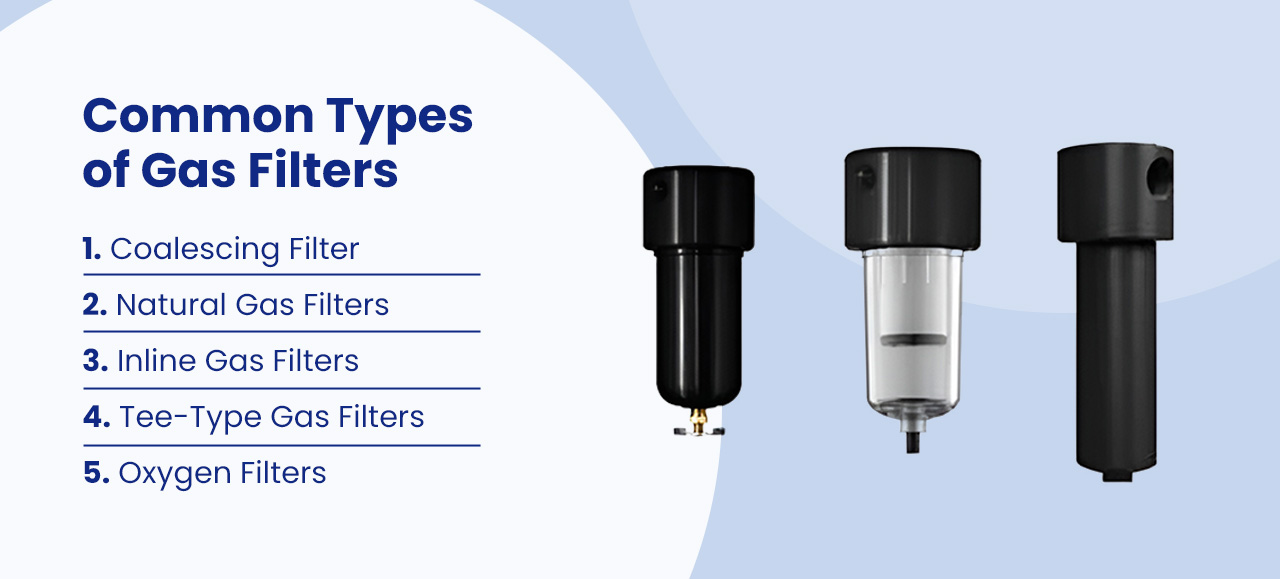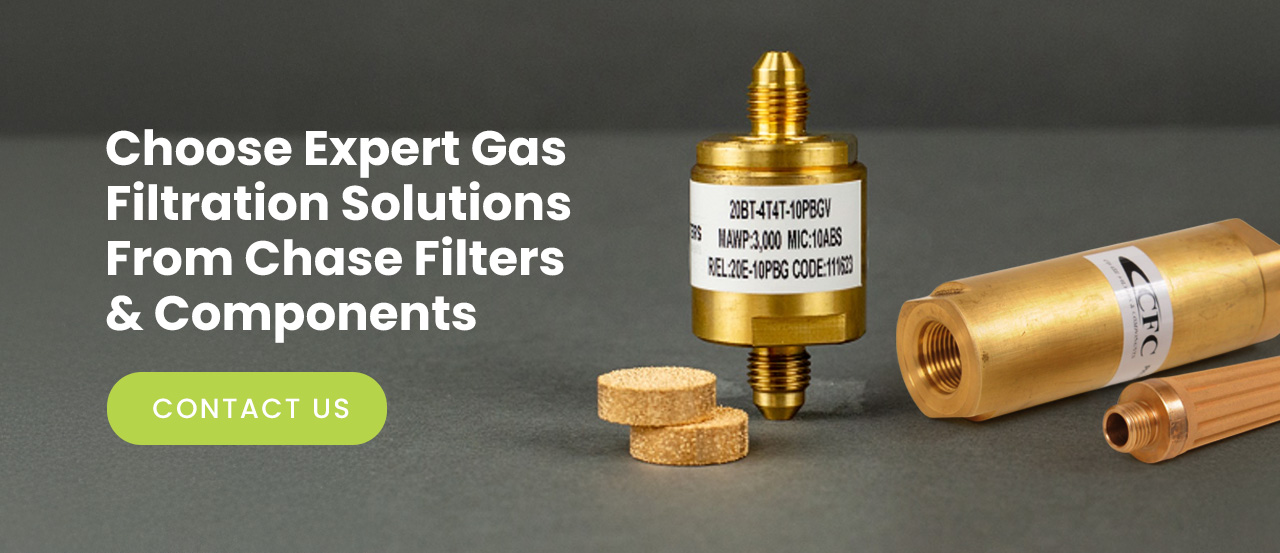July 10, 2025
What Do Gas Filters Do?

Gas filters are essential components that remove impurities such as dust, debris, rust and other contaminants from gas streams. By ensuring a clean gas flow, they help protect industrial equipment and enhance operational efficiency. Gas filters are used in various operations, such as automotive, manufacturing and chemical processing systems.
Read on to learn more about the key benefits of gas filters and why timely maintenance is important to keep them effective. We also explore gas filtration methods to capture contaminants and common types of gas filters.
The Key Benefits of Gas Filters
The following advantages demonstrate the value of using quality gas filters:
- Process efficiency: Gas filters help maintain consistent pressure and flow by preventing equipment blockages and fouling. Clean gas supports efficient combustion and uninterrupted chemical processes, which are vital in industrial operations. Additionally, removing impurities like dust and particulates improves system reliability and reduces costly downtime and repairs.
- Equipment protection and savings: Effective gas filtration is important for protecting many types of machines, such as turbines, boilers and gas-fired equipment. Even microscopic particles or moisture can cause corrosion, clogging and damage in components like seals and bearings. Gas filters act as the first line of defense from premature damage, keeping contaminants out while extending the lifespan of machinery and reducing maintenance costs.
- Ensures gas purity: Since gas has contaminants, gas purity protects infrastructure and supports the delivery of high-quality gas to end users. For example, natural gas usually contains particulates, water vapor, hydrocarbons and corrosive compounds such as sulfur. A natural gas filter prevents these contaminants from damaging downstream systems while providing pure natural gas to customers.
- Regulatory compliance: Gas suppliers must meet stringent quality and safety standards. For instance, the Environmental Protection Agency regulates fuels and fuel additives under the Clean Air Act. This includes setting standards for acceptable gas sulfur content and other contaminants. Filters help meet these requirements by removing substances that pose safety risks, such as sulfur, which corrodes pipelines. Maintaining compliance helps avoid fines, enhances safety and protects supplier credibility.
The Importance of Gas Filter Maintenance
Over time, dirty filters can release trapped particles into the gas streams, causing further equipment damage. Regularly maintaining and replacing gas filters prevents clogging and strain on equipment. Timely upkeep ensures optimum filter performance, preserves equipment and minimizes costly downtime.
5 Methods That Facilitate Gas Filtration
Effective removal of gas contaminants can be achieved through these filtration methods:
1. Brownian Motion
Fine particles like smoke and dust are filtered through the principle of Brownian motion. As gas flows through a filter, microscopic particles move unpredictably due to constant collisions with gas molecules. This erratic movement promotes particle capture by increasing the likelihood of collision with the filter fibers, effectively removing them from the gas stream.
2. Electrostatic Method
Harnessing electric charge, electrostatic filtration attracts and removes fine particulate matter such as dust, smoke and mist. Filtration devices like electrostatic precipitators (ESPs) generate charged fields that draw in oppositely charged particles from gas flows.
Commonly used in power plants, machine shops and heating and ventilation systems, ESPs offer efficient, large-scale air pollution control.
3. Sieve Effect
When particles are larger than the openings in a filter, they accumulate on the surface and are physically blocked from flowing further into gas streams. This gas filtration process is known as the sieve effect, which forms a filter cake that enhances filtration.
Molecular sieve filters go a step further by using uniform pores to separate gas components and trap impurities like moisture or volatile organic compounds.
4. Inertial Method
In the inertial gas filtration process, heavier particles deviate from the gas stream instead of following its path. A process called inertial impaction occurs when the gas changes direction and the particles strike and embed into the filter. Inertial impaction is especially useful for capturing larger contaminants.
For example, inertial particle separators used in gas turbines use a curved flow path to force heavier particles, like dust and sand, to separate from the main airflows. This design protects the turbine blades from damage caused by contaminants.
5. Locking Effect
As gas travels through a filter’s complex geometry, larger particles become trapped in its pathways. This locking mechanism removes contaminants by physically lodging particles based on size and shape, preventing them from flowing downstream and damaging the equipment.
Common Types of Gas Filters
Gas filters come in various types and are suitable for specific applications. Learn about these five common gas filters below:
Coalescing Filter
Coalescing filters are engineered to eliminate fine liquid aerosols, such as oil, water and other vapors from gas streams. Through the process of coalescence, tiny droplets merge into larger ones, making them easier to capture.
Coalescing filters can remove particles 0.1 microns or smaller, making them indispensable in high-purity applications. For example, in chemical processing, they protect systems by extracting both liquid and vapor contaminants such as methane, carbon dioxide, sulfur and oils.
Natural Gas Filters
A natural gas filter is specifically designed to remove solids, liquids and vapor-phase contaminants before the gas is ready for storage, transport and use. By filtering out water, hydrocarbons and particulate matter, these filters support optimal flow and prevent damage to critical infrastructure.
In regions where natural gas is widely mined and distributed, using natural gas filters ensures gas products meet safety and regulatory standards.
Inline Gas Filters
An inline gas filter is installed directly into the gas or fluid line. It has a straight-through design with an aligned inlet and outlet connection for continuous filtration. Inline filters are commonly used for fuel systems, automotive engines and pneumatic systems. They remove contaminants such as fibers, silt and metal shavings from gas and oil streams, keeping equipment safe and free from impurities.
For example, if you need a high-pressure inline gas filter for applications with limited space, Chase Filters & Components offers compact Series 21, Series 22 and Series 23 mini inline filters. Inline filters also come in a range of operating pressures. The Series 31 inline filter operates up to 6,000 pounds per square inch (PSI), while the Series 33 can withstand operating pressures up to 30,000 psi.
Tee-Type Gas Filters
Known for its distinct “T” configuration, tee-type filters feature an inlet and outlet on one side and a vertical filter element connection on the opposite side. This design offers convenient filter removal and replacement without disconnecting the line. Tee-type filters are often used for high-pressure hydraulic systems, industrial processes and water treatment.
For example, the Series 41 and Series 43 tee-type filters are suitable for demanding operations, such as mining, petrochemical and aerospace applications. If you need a corrosion-resistant tee-type filter, the Series 51 tee-type filter withstands corrosion in hydraulic and pneumatic systems. For specific requirements, the Series 52 is customizable and is available in stainless steel, porous sintered stainless steel, micro-glass elements and fiber metal felt elements.
Oxygen Filters
Oxygen filters remove particulates that could lead to ignition and equipment damage. They’re crucial in settings where pure oxygen is used for operations, such as aerospace, medical labs and laser-cutting applications.
Given the high flammability of oxygen-rich environments, oxygen filters are constructed from nonflammable materials to prevent fire hazards and maintain the safety and integrity of these workplaces.
Choose Expert Gas Filtration Solutions From Chase Filters & Components
Support operational continuity by using high-quality gas filters to prevent contaminant damage. Partner with Chase Filters & Components for superior gas filtration solutions, including coalescing filters, oxygen filters, inline filters and tee-type filters.
With more than 30 years of industry expertise, Chase Filters & Components manufactures high- and low-pressure filters for gas, air, oxygen, engine lubricant, hydraulic fluid, fuel and water applications. We work with all major industries, such as chemical processing, oil and gas, aerospace, and automotive. Our experienced design engineering team is ready to provide custom filtration solutions for your needs.
Contact us today to learn how we can resolve your gas filtration challenges.

